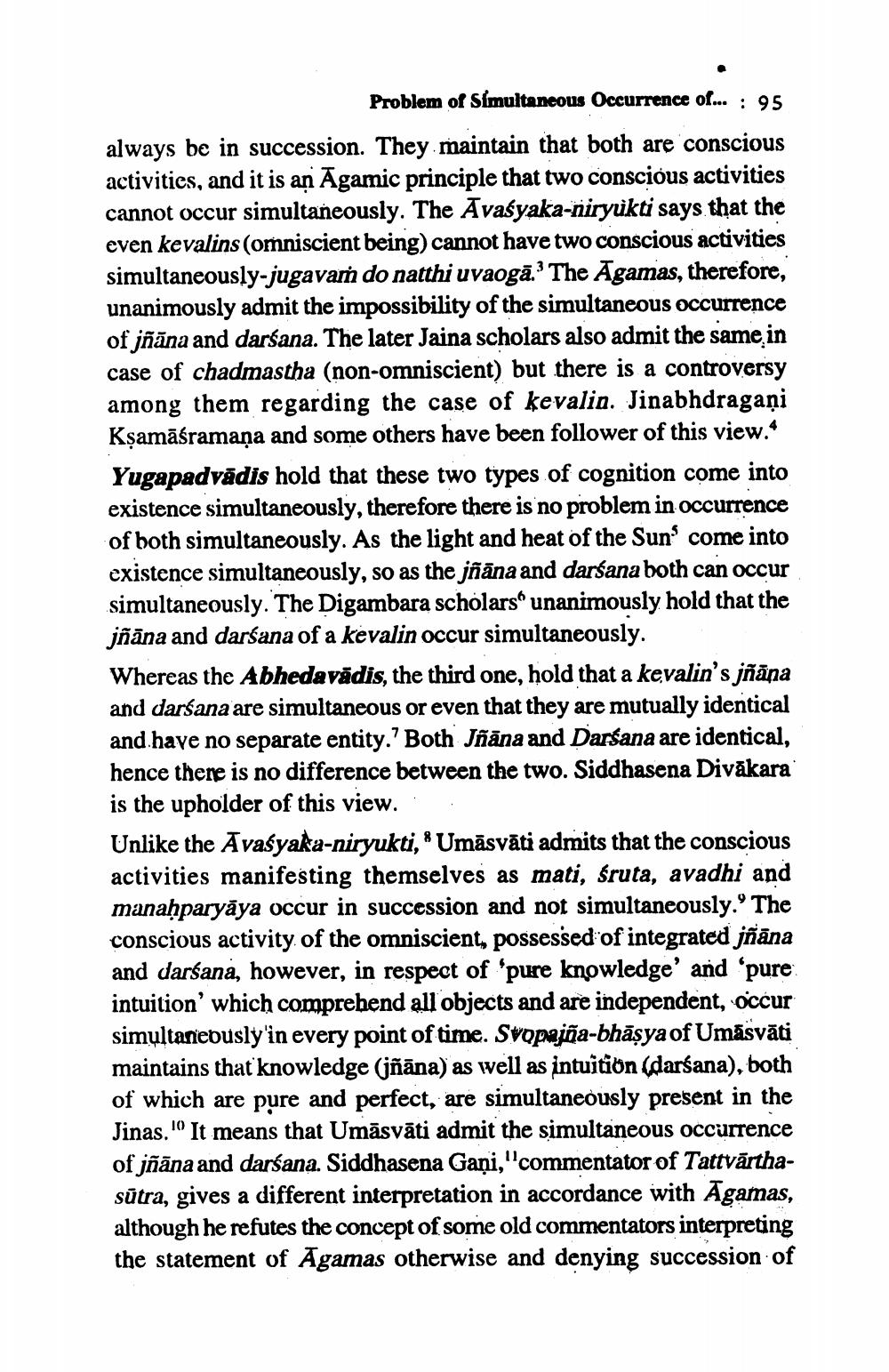________________
Problem of Simultaneous Occurrence of... : 95 always be in succession. They maintain that both are conscious activities, and it is an Agamic principle that two conscious activities cannot occur simultaneously. The Avašyaka-niryukti says that the even kevalins (omniscient being) cannot have two conscious activities simultaneously-jugava do natthi uvaogā." The Agamas, therefore, unanimously admit the impossibility of the simultaneous occurrence of jñāna and darśana. The later Jaina scholars also admit the same in case of chadmastha (non-omniscient) but there is a controversy among them regarding the case of ķevalin. Jinabhdragaņi Kșamāśramaņa and some others have been follower of this view." Yugapadvādis hold that these two types of cognition come into existence simultaneously, therefore there is no problem in occurrence of both simultaneously. As the light and heat of the Sun come into existence simultaneously, so as the jñāna and darśana both can occur simultaneously. The Digambara scholars“ unanimously, hold that the jñāna and darśana of a kevalin occur simultaneously. Whereas the Abhedavādis, the third one, hold that a kevalin's jñāna and darśana are simultaneous or even that they are mutually identical and have no separate entity.' Both Jñāna and Darśana are identical, hence there is no difference between the two. Siddhasena Divākara is the upholder of this view. Unlike the Avaśyaka-niryukti, * Umāsvāti admits that the conscious activities manifesting themselves as mati, śruta, avadhi and manahparyāya occur in succession and not simultaneously. The conscious activity of the omniscient, possessed of integrated jñāna and darśana, however, in respect of 'pure knowledge' and 'pure intuition' which comprehend all objects and are independent, occur simultaneously'in every point of time. Svopajña-bhāsya of Umāsvāti maintains that knowledge (jñāna) as well as intuition (darśana), both of which are pure and perfect, are simultaneously present in the Jinas."' It means that Umāsvāti admit the simultaneous occurrence of jñāna and darśana. Siddhasena Gaņi,"commentator of Tattvārthasūtra, gives a different interpretation in accordance with Agamas, although he refutes the concept of some old commentators interpreting the statement of Agamas otherwise and denying succession of




